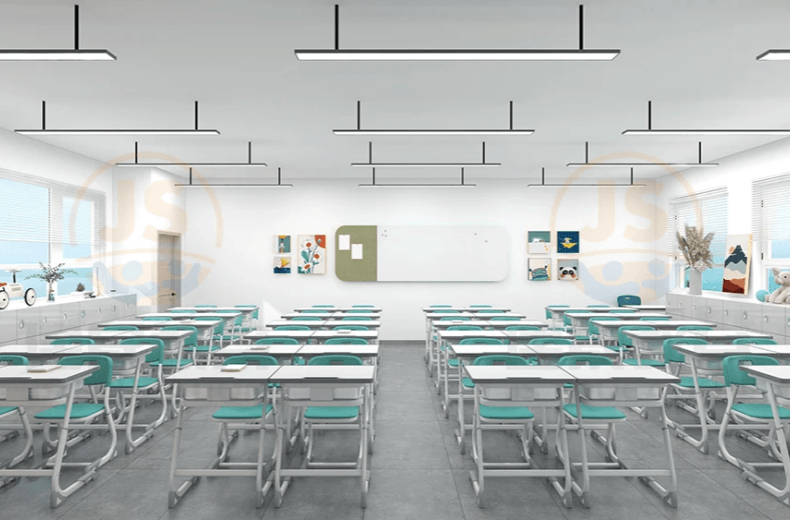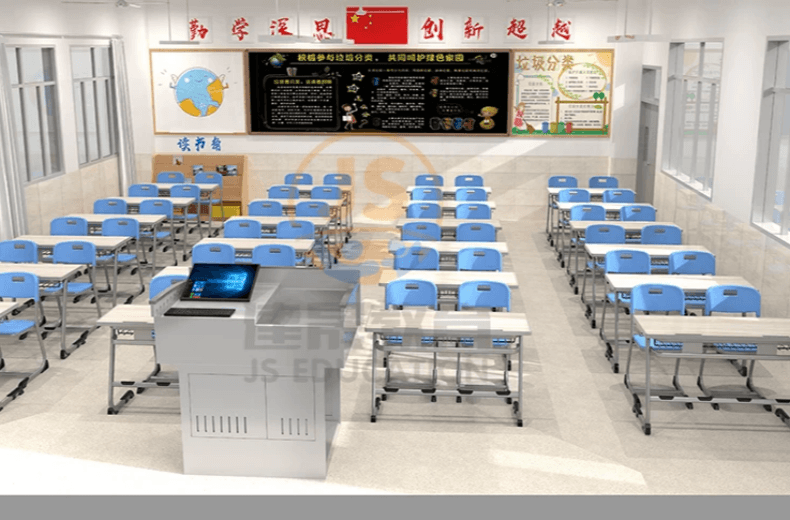- Home
- About Us
- Service
-
Solution
- Kindergarten Classroom
- Primary School Classroom
- Secondary School Classroom
- High School Classroom
- College Classroom
- Training Classroom
- Music Classroom
- Art Classroom
- Lecture Classroom
- Computer Classroom
- Library
- Principal Office
- Administration Office
- Meeting Room
- Reception Room
- Public Area
- Teachers' Office
-
Products
- Case Study
- News
- VR Designs
- Video Center
- JS Lab
- Contact Us

Sustainability in Furniture A Step Towards a Greener Future
2023-11-22 22:00
Sustainability in Furniture: A Step Towards a Greener Future In recent years, sustainability has become an increasingly important topic in various industries, including the furniture sector. As consumers become more conscious of the impact their choices have on the environment, the demand for sustainable furniture has risen significantly. But what exactly does sustainability mean in the context of furniture?

Sustainable furniture refers to products that are designed and manufactured with consideration for the environmental, social, and economic aspects of their lifecycle. This means that sustainable furniture is not only made from eco-friendly materials but also produced in a way that minimizes waste, reduces energy consumption, and promotes fair labor practices. One of the key aspects of sustainable furniture is the use of eco-friendly materials. Traditional furniture often relies on materials like hardwood sourced from deforestation-prone areas, which leads to habitat destruction and contributes to climate change. In contrast, sustainable furniture utilizes materials such as reclaimed wood, bamboo, or recycled plastic, which have a lower environmental impact. These materials not only reduce the demand for virgin resources but also help divert waste from landfills.

Furthermore, sustainable furniture promotes responsible manufacturing processes. This includes reducing the use of harmful chemicals in finishes and adhesives, as well as implementing efficient production techniques to minimize energy consumption. Manufacturers are also encouraged to adopt practices that prioritize waste reduction, recycling, and the use of renewable energy sources.
In addition to environmental considerations, sustainable furniture also takes social and economic factors into account. This means ensuring fair labor practices throughout the supply chain, from the sourcing of raw materials to the manufacturing and distribution of the final product. By supporting companies that prioritize fair wages, safe working conditions, and ethical sourcing, consumers can contribute to a more sustainable and equitable furniture industry.

Choosing sustainable furniture not only benefits the environment and society but also offers long-term advantages for consumers. Sustainable furniture is often built to last, using durable materials and high-quality craftsmanship. This means that instead of constantly replacing worn-out furniture, consumers can invest in pieces that will stand the test of time. Additionally, sustainable furniture often comes with certifications, such as Forest Stewardship Council (FSC) or Cradle to Cradle (C2C), which provide reassurance that the product meets specific sustainability standards.
In conclusion, the concept of sustainability has permeated the furniture industry, prompting a shift towards more eco-friendly and socially responsible practices. By opting for sustainable furniture, consumers can make a positive impact on the environment, support ethical manufacturing, and enjoy long-lasting, high-quality products. As the demand for sustainable furniture continues to grow, it is hoped that more companies will embrace these principles, leading to a greener and more sustainable future for the furniture industry as a whole.
Get the latest price? We'll respond as soon as possible(within 12 hours)







